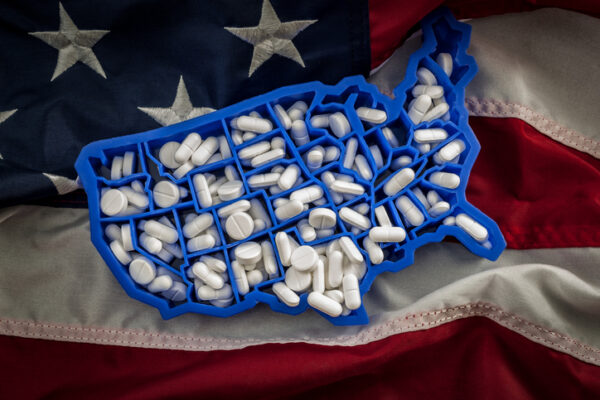[ad_1]
 CVS, Walgreens and Walmart must pay $650 million to two Ohio counties for their part in the opioid epidemic., a judge ruled Wednesday. This would “address a small piece of a terrible and tenacious and escalating national tragedy,” said U.S. District Judge Aaron Polster. But some say the ruling has potential to cause further damage by spooking pharmacists.
CVS, Walgreens and Walmart must pay $650 million to two Ohio counties for their part in the opioid epidemic., a judge ruled Wednesday. This would “address a small piece of a terrible and tenacious and escalating national tragedy,” said U.S. District Judge Aaron Polster. But some say the ruling has potential to cause further damage by spooking pharmacists.
The decision showed that Polster believed the three companies’ oversupply of prescription opioids contributed to the epidemic in Lake and Trumbull counties in Ohio. He ruled that the pharmacies should be responsible for one-third of the total abatement costs, with drugmakers, distributors, and dispensers of prescription opioids also liable.
There are more than 3,000 cases that are part of the multidistrict litigation concerning the opioid epidemic. So far, most drugmakers and distributors have reached settlements with counties that brought cases against them. Wednesday’s decision represents the first time a judge has ruled against large, well-recognized retail pharmacies.
Some say pharmacies aren’t the right ones to blame, however. Zack Gray, co-founder and CEO of Ophelia, a direct-to-patient digital health provider that pairs telemedicine with life-saving medication-assisted treatment (MAT) to treat opioid use disorder (OUD) called the ruling “well-intentioned” but says it sends the wrong message.
“While well-intentioned, this ruling has the potential to cause further damage by spooking pharmacies from dispensing buprenorphine, a life-saving addiction treatment medication,” Gray said. “Buprenorphine is a controlled medication used to treat opioid use disorder, and pharmacies around the country are already reluctant to dispense it for fear that it may prompt an investigation by the Drug Enforcement Administration (DEA). This decision sends pharmacists a dangerous message: you’re expected to overrule doctors – and not doing so can be costly.”
Gray says the DEA should issue clearer guidance to pharmacists regarding prescriptions to treat opioid addiction. The agency has publicly committed to allowing telemedicine for buprenorphine beyond the pandemic but it needs to make it clear that remote prescribing of this medication is aligned with its agenda, Gray said. This is especially important since prescribing buprenorphine is already heavily regulated with prescribers requiring special DEA license to dispense the drug. There are also rigid limits on how many patients each prescriber can provide that treatment to.
While pharmacists contend with the impact of this ruling, the spotlight on retail pharmacies is not going away anytime soon.
Walgreens is on the hook in California, where a judge in the Northern District earlier this month determined that the pharmacy “substantially contributed to the opioid epidemic.” A second phase of the trial will help determine Walgreens’ responsibility to curb the problem it helped create.
CVS Health, Walgreens, and Walmart did not immediately respond to request for comment.
Photo: Moussa81, Getty Images
[ad_2]




